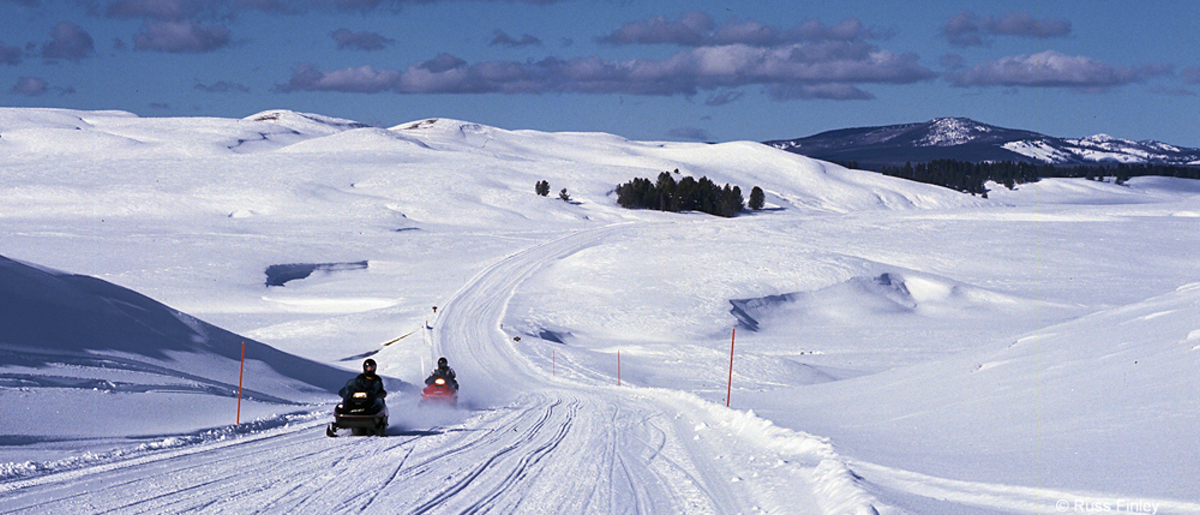National Park Service Regulation 36 CFR 2.18 prohibits snowmobile use in national parks when there is no specific rule authorizing their use. This is known as the “closed unless open rule”—without a specific rule, oversnow vehicles would be prohibited from entering Yellowstone.
The final Rule authorizing OSV use in Yellowstone was published in the Federal Register on October 23, 2013 and was based upon the environmental analyses contained within the 2013 SEIS and Record of Decision. The final Rule provides mechanisms to make the park cleaner and quieter than previously authorized; provides greater flexibility for OSV commercial tour operators; rewards new oversnow technologies; allows for increases in public visitation. The specific parameters established by the final Rule for winter use in Yellowstone are
- Up to 110 daily transportation events.
- 46 reserved for commercially guided snowmobiles.
- 4 reserved for non-commercially guided snowmobiles.
- No less than 60 events reserved for snowcoaches.
- New “best available technology” (New BAT) is required for snowmobiles by December 2015. Under New BAT, snowmobile transportation events can be up to 10 snowmobiles in a group, with group size averaging 7 each winter.
- BAT is required for all snowcoaches by December 2016, sooner for newer models.
- Voluntary “Enhanced BAT” (E-BAT) certification will allow commercial tour operators to increase the average numbers of snowmobiles in their groups from 7 to 8 and snowcoaches from 1 to 1.5 across the season.
- One non-commercially guided group of up to five snowmobiles is permitted to enter through each of the four park entrances every day.
- OSVs may continue to use Sylvan Pass; however, the pass may be closed at any time due to avalanche danger or mitigation efforts.
- Park managers are collaborating with the public by implementing an Adaptive Management Program, which will combine science with public input, to ensure that OSV use impacts stay within limits predicted in the final Plan/SEIS.
